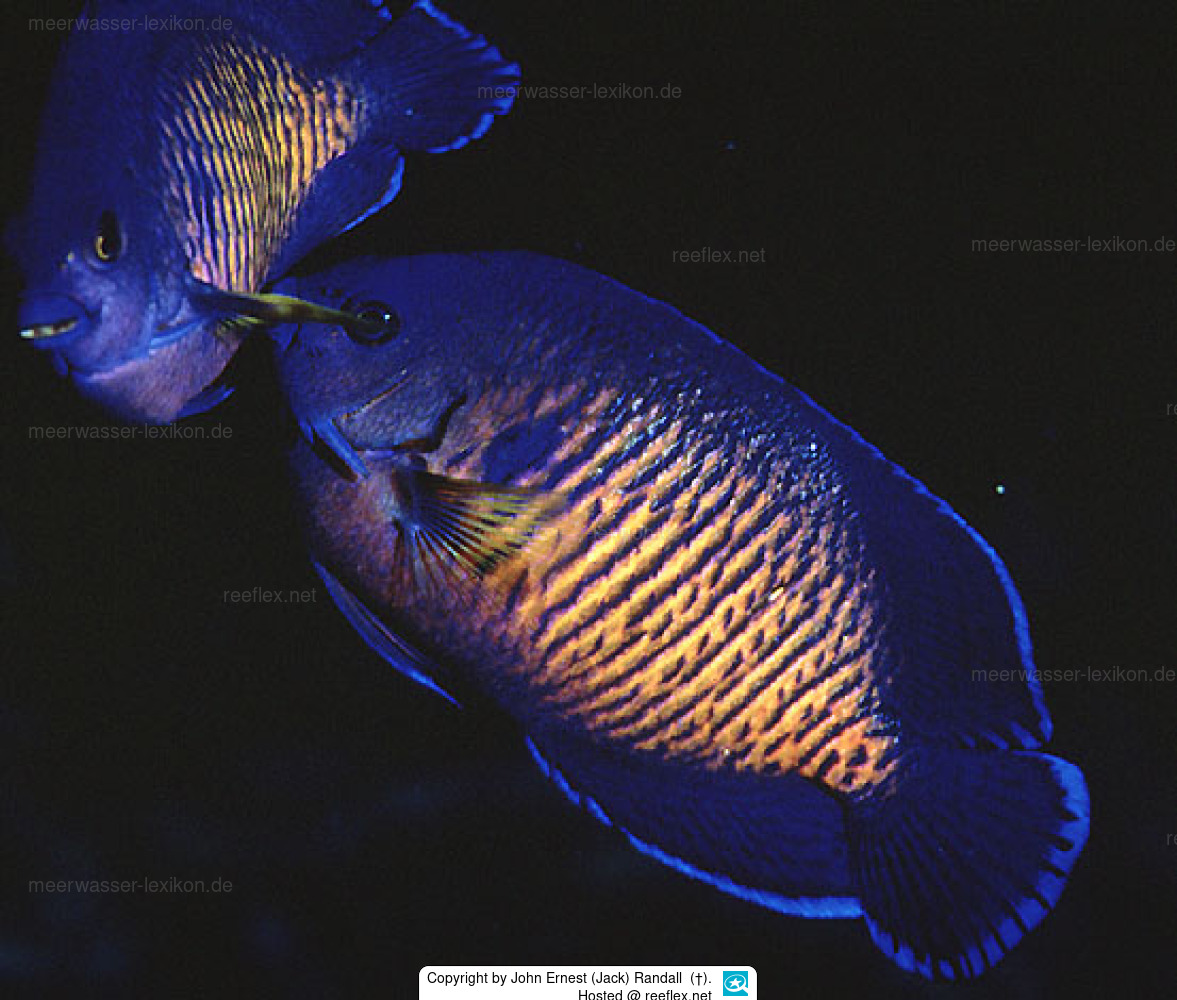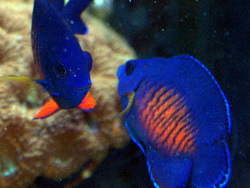Info
(Günther, 1860)
The Coral Beauty Angelfish is very common on the Great Barrier Reef, is also known as the Twospined or Dusky Angelfish. The body and head are a deep royal blue, highlighted with an iridescent orange to yellow. It is often confused with the Centropyge multispinis, also called Bluefin Angelfish.
It requires a tank with lots of hiding places and live rock for grazing. Not a good reef dweller, the Coral Beauty Angelfish is prone to nip at stony and soft corals (sessile invertebrates). The diet of the Coral Beauty Angelfish should consist of marine algae, like all Centropyge consume the Coral Beauty a considerable amount of microalgae and detritus, therefore it pays to not be too meticulous in keeping their system to clean. The Coral Beauty eats also like other Dwarf Angels, high-quality angelfish preparations, mysid or frozen shrimp, and other quality meaty foods. Like all angelfish, the Coral Beautys are constant and voracious feeders. They will sample anything and everything placed within the tank, including corals. Caution should be used when considering placing an angel
Dwarf angels are known prey items for many larger reef fishes. Which explains their inquisitive and alert behaviour. Placing these fish with larger predatory species should be avoided (ie: Groupers/Bass, Lionfish, Triggers). Dwarf angels do not adjust well to aggressive tankmates.
Synonyms:
Centropyge bispinosus (Günther, 1860)
Centropyge hispinosus (Günther, 1860)
Holacanthus bispinosus Günther, 1860
Classification: Biota > Animalia (Kingdom) > Chordata (Phylum) > Vertebrata (Subphylum) > Gnathostomata (Superclass) > Pisces (Superclass) > Actinopterygii (Class) > Perciformes (Order) > Pomacanthidae (Family) > Centropyge (Genus)
The Coral Beauty Angelfish is very common on the Great Barrier Reef, is also known as the Twospined or Dusky Angelfish. The body and head are a deep royal blue, highlighted with an iridescent orange to yellow. It is often confused with the Centropyge multispinis, also called Bluefin Angelfish.
It requires a tank with lots of hiding places and live rock for grazing. Not a good reef dweller, the Coral Beauty Angelfish is prone to nip at stony and soft corals (sessile invertebrates). The diet of the Coral Beauty Angelfish should consist of marine algae, like all Centropyge consume the Coral Beauty a considerable amount of microalgae and detritus, therefore it pays to not be too meticulous in keeping their system to clean. The Coral Beauty eats also like other Dwarf Angels, high-quality angelfish preparations, mysid or frozen shrimp, and other quality meaty foods. Like all angelfish, the Coral Beautys are constant and voracious feeders. They will sample anything and everything placed within the tank, including corals. Caution should be used when considering placing an angel
Dwarf angels are known prey items for many larger reef fishes. Which explains their inquisitive and alert behaviour. Placing these fish with larger predatory species should be avoided (ie: Groupers/Bass, Lionfish, Triggers). Dwarf angels do not adjust well to aggressive tankmates.
Synonyms:
Centropyge bispinosus (Günther, 1860)
Centropyge hispinosus (Günther, 1860)
Holacanthus bispinosus Günther, 1860
Classification: Biota > Animalia (Kingdom) > Chordata (Phylum) > Vertebrata (Subphylum) > Gnathostomata (Superclass) > Pisces (Superclass) > Actinopterygii (Class) > Perciformes (Order) > Pomacanthidae (Family) > Centropyge (Genus)







 Dr. John Ernest (Jack) Randall (†), Hawaii
Dr. John Ernest (Jack) Randall (†), Hawaii





































































